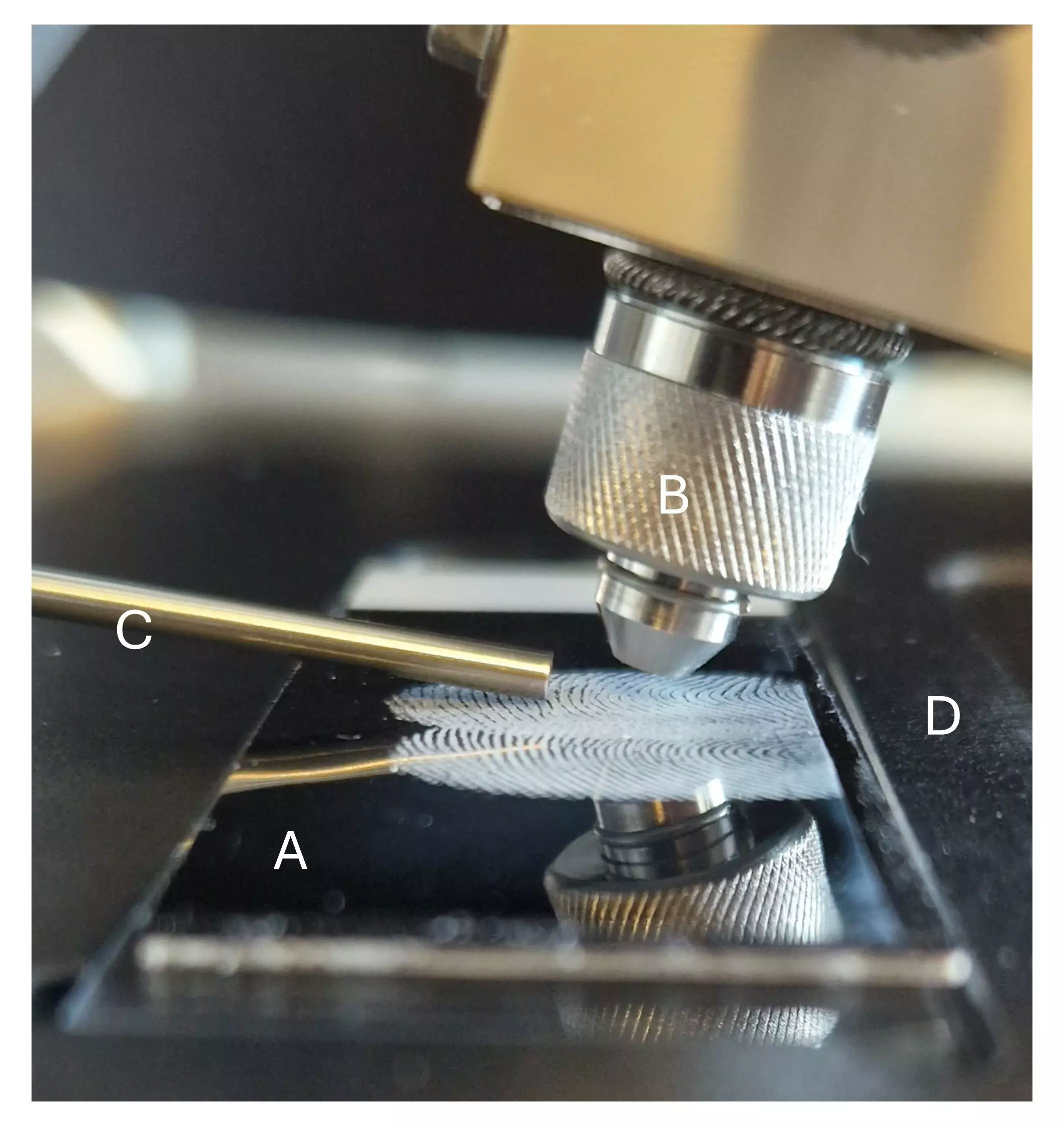In a groundbreaking innovation from Aarhus University’s Department of Forensic Medicine, a new technique has emerged that promises to transform the field of forensic science. Traditional fingerprinting methods, particularly those relying on gelatin lifters, often struggle in real-world crime scenes, where overlapping or faint marks render critical evidence unusable. By deploying chemical imaging, researchers have set the stage for a paradigm shift in how fingerprints are analyzed, potentially enhancing criminal investigations significantly.
Fingerprint analysis has long been a staple in criminal investigations; however, the techniques currently in use exhibit considerable limitations. When Danish police use gelatin lifters to collect prints, they face challenges that can undermine the utility of this evidence. For example, gelatin lifters allow officers to collect prints from various surfaces, even those that are delicate or textured. However, once the prints are transferred, they are often documented with traditional photography, which lacks the capability to distinguish between overlapping prints found frequently at crime scenes. The inability to retrieve and analyze faint prints has led to the unnecessary exclusion of potentially crucial evidence, jeopardizing investigations and legal proceedings.
The solution proposed by Aarhus University’s research team hinges on the adoption of Desorption Electrospray Ionization Mass Spectrometry (DESI-MS). This technique assesses the elemental and compound makeup of fingerprints by identifying the mass of the molecules present in them. By utilizing a delicate spray of charged droplets, this method reveals a fingerprint’s chemical composition in a way that previous methods could not. This is particularly important not only for identifying the prints but also for exploring what substances might have been in contact with the individual who left the print.
Kim Frisch, the study’s postdoc researcher, emphasizes the potential for integration into established police workflows, indicating that using DESI-MS could make previously discarded fingerprints viable for further investigation. With its development dating back two decades, DESI-MS has evolved in its applicability, now offering promising prospects in forensic contexts. The challenge it addresses—overlapping and faint prints—could pave the way for more comprehensive analyses of physical evidence.
The implications of using chemical imaging for fingerprint analysis are profound. Not only does it promise to salvage fingerprint evidence that may have been overlooked under traditional techniques, but it also opens a new avenue for forensic profiling. Each fingerprint bears a wealth of information, including natural oils from the skin as well as potentially incriminating substances, such as drugs or traces of illicit items. This analysis enables law enforcement to delve deeper into an individual’s associations with various substances or experiences, including drug usage and environmental exposures.
Furthermore, researchers worldwide are exploring the potential of using fingerprint chemical profiles to derive information about a person’s demographic characteristics, lifestyle choices, and health habits. These developments underscore the crucial role chemical imaging could play in understanding the broader context of crime scenes and the individuals involved.
The study’s advancement is made possible through collaborative efforts with the National Special Crime Unit of the Danish Police. This partnership is essential for ensuring that the scientific developments are grounded in practical law enforcement needs. As researchers work to refine and implement this method, they anticipate that it could be particularly beneficial in high-stakes investigations—those involving serious crimes such as homicide and sexual assault.
Currently, the research team is focused on extending the methodology to account for real-world crime scene conditions. Though the testing thus far has been limited to fingerprints collected in controlled environments, there is optimism surrounding upcoming analyses of field-collected samples, which will offer invaluable insights into the method’s efficiency and accuracy.
The innovative application of chemical imaging to fingerprint analysis marks a significant leap forward in forensic science. By addressing the constraints of earlier methods, the study from Aarhus University represents a potential game-changer for criminal investigations. With ongoing collaborations and further development, this method stands to enhance the integrity of criminal investigations significantly, creating opportunities for law enforcement to regain lost evidence and solve cases that would otherwise remain cold. As forensic technology evolves, the implications for justice are promising, heralding a new era of scientific advocacy within the realms of crime and investigation.

